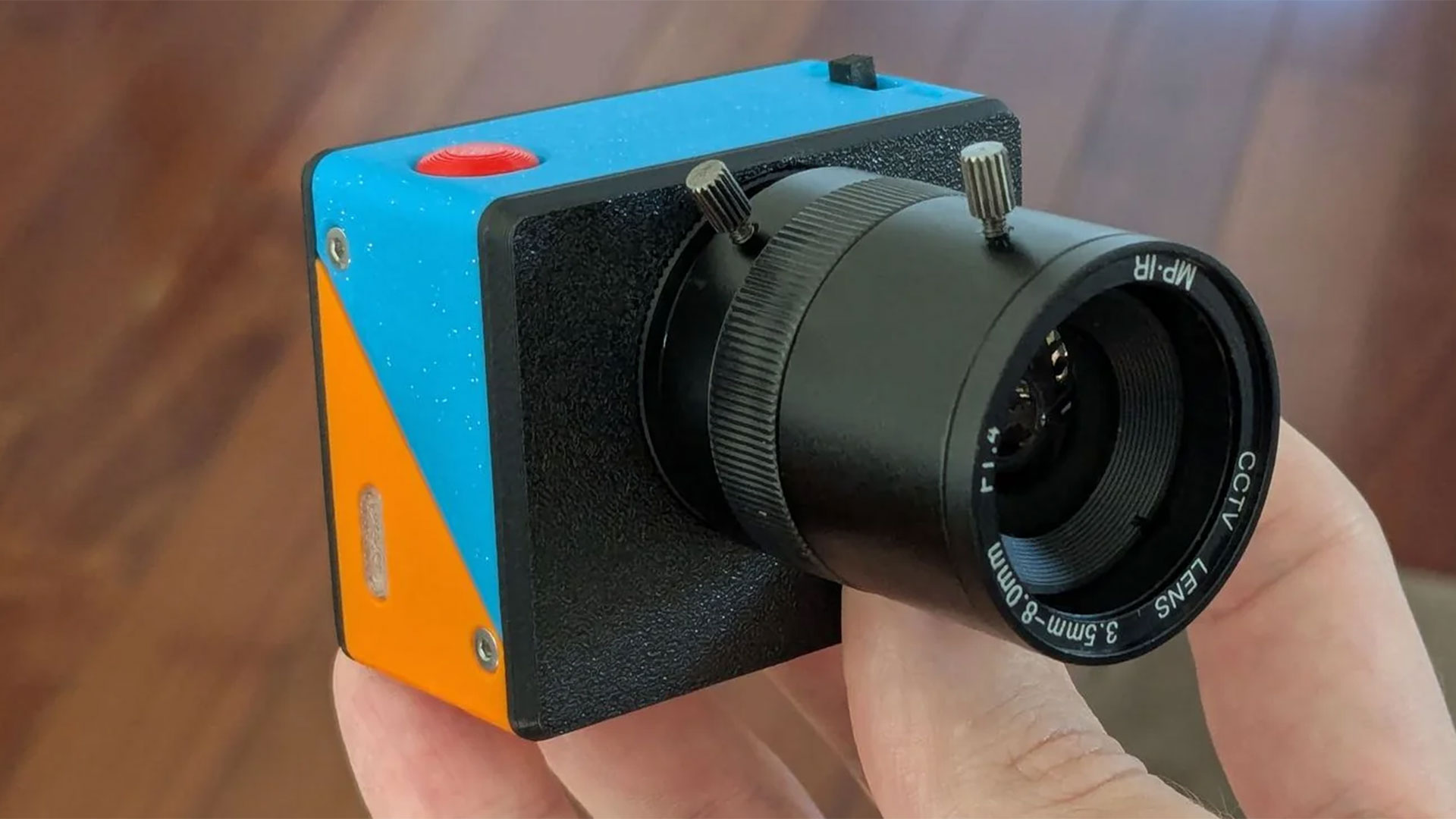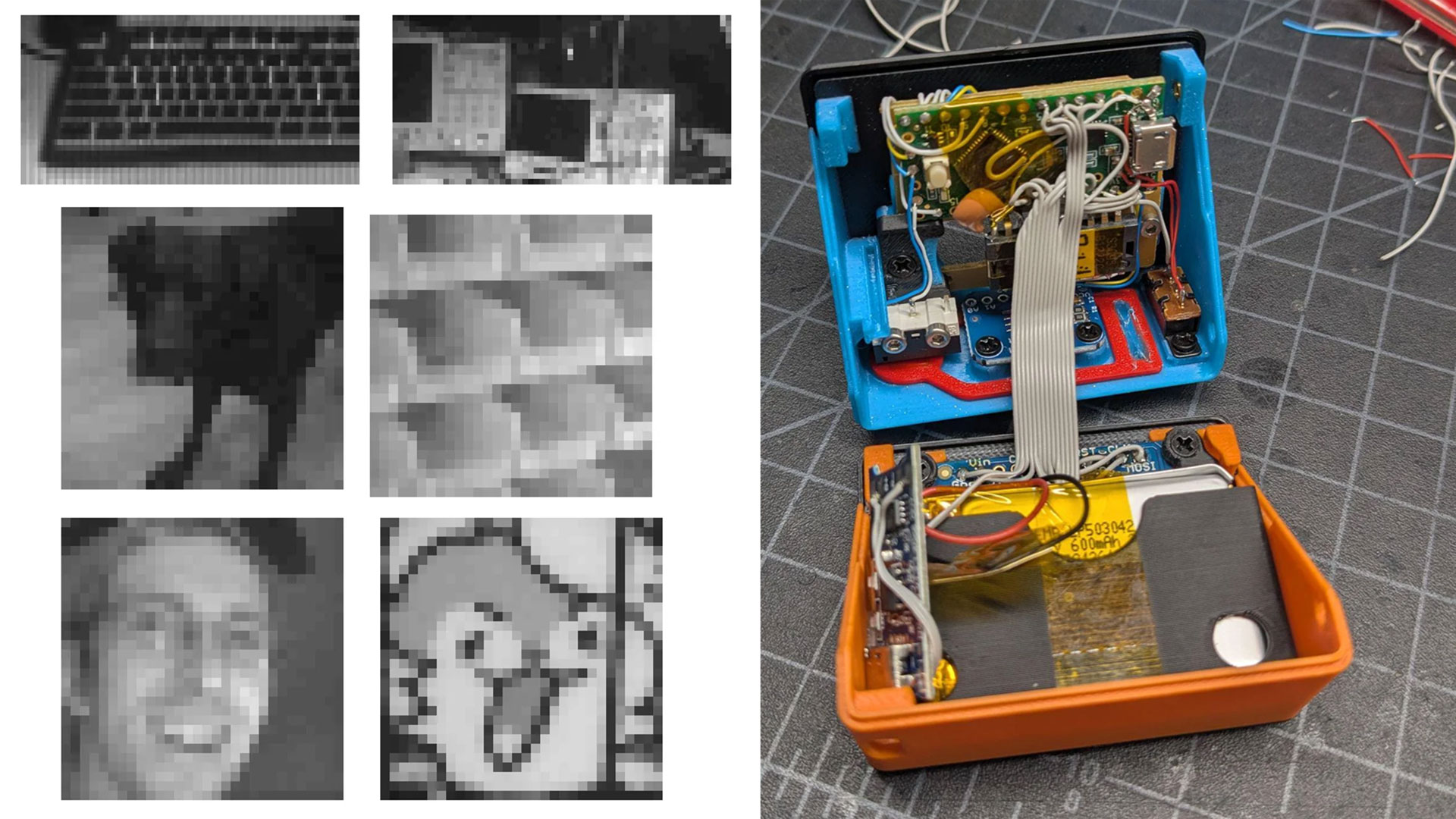3D printing enthusiast creates camera with a gutted optical mouse's sensor — lo-fi 30x30 pixel camera took 65 hours to build
The postage stamp pixel images are also limited by their 64 shades of gray. Well done, though.

A 3D printing enthusiast has made a cute, functional digital camera using an optical sensor salvaged from a discarded mouse PCB. This is an admirable recycling-inspired maker project to see completed, and you can witness it in action in the embedded Reddit post below. However, don’t set your recycling old rodents into digital cameras' hopes too high, as the results are definitely lo-fi.
I made a camera from an optical mouse. 30x30 pixels in 64 glorious shades of gray! from r/3Dprinting
After a quick 360 degree tour of the unchristened device – let’s call it the magical mouse camera (MMC) – Dycus turned it to face their workbench, and powered on the device using the black button atop. Subsequently, we get to see the electronic viewfinder power up and, despite its tiny size, it is still evident that the images are going to have a Minecraft-esque blocky flair, putting it kindly.
According to Dycus, the lo-fi results are simply due to the mouse sensor doubling as a photographic sensor. The ADNS-3090 sensor is only capable of capturing a native 30x30 pixels, and it is limited to 64 shades. That doesn’t mean this device will be without its uses, only that you must be aware of them.
65 hours to completion
Dycus says that the whole MMC camera project took just 65 hours from getting the project itch to the satisfying completion, with a finished camera in hand. Despite the minimal timescale, the fit and finishing look great, and there is quite a bit of maker tech packed into that camera body.
In addition to the 3D printed structural components, Dycus used:
- Logitech G400 mouse sensor (2011 vintage)
- A cheap 3.5-8.0mm F1.4 CCTV lens from Amazon
- An Adafruit 12C FRAM breakout board to hold up to 48 photos
- An Adafruit OLED breakout board (exact model not confirmed)
- A Teensy LC microcontroller
- A 600mAh rechargeable battery
- Other sundry components, solder, and sweat
The camera is claimed to be capable of shooting video, but the 32KB memory installed incapable of holding anything worthwhile.
Dycus seems to be most pleased with the software behind the MMC, though. Making liberal use of “a few standard Arduino libraries” the maker “wrote support for the sensor, UI code, code to talk to the external memory chip, code to draw the images to the display, and other misc stuff.”
Get Tom's Hardware's best news and in-depth reviews, straight to your inbox.
With multi-shooting mode software
The work on the software side, also completed in those few 65 hours, delivered multiple shooting modes (single shot, double shot, quad shot, ‘smear’ shot (panorama), and cowboy), plus a bonus draw-on-the-screen mouse mode that uses the touch sensor as intended. Users can also pick from multiple color palettes, not just gray.
Dycus wrote what they call a “rudimentary photo dump to computer via Python script and serial port.” If it works, for archiving the camera’s precious lo-fi cargo, then it is fit for purpose.
Last but not least, Dycus compares their MMC to what is probably the most famous lo-fi image-capture device around, the Nintendo Game Boy Camera. While Nintendo still wins the resolution race, the MMC trumps it for color depth with its 64 vs 4 shades superiority.
This isn’t the first optical mouse-to-camera project we have reported on at Tom’s Hardware. Last year, we showcased the Doctor Volt Mouse Camera with its extremely coarse 18x18 pixel resolution. In contrast to Dycus’s work, the good doctor didn’t bother to redesign the camera housing, so it looked like a mouse on a tripod.

Follow Tom's Hardware on Google News, or add us as a preferred source, to get our latest news, analysis, & reviews in your feeds.

Mark Tyson is a news editor at Tom's Hardware. He enjoys covering the full breadth of PC tech; from business and semiconductor design to products approaching the edge of reason.
-
bit_user If they'd use a higher-res sensor, I wonder if these could provide a workable solution for ultra high-framerate imaging. Considering how fast the polling rate is, on some gaming mice.Reply
